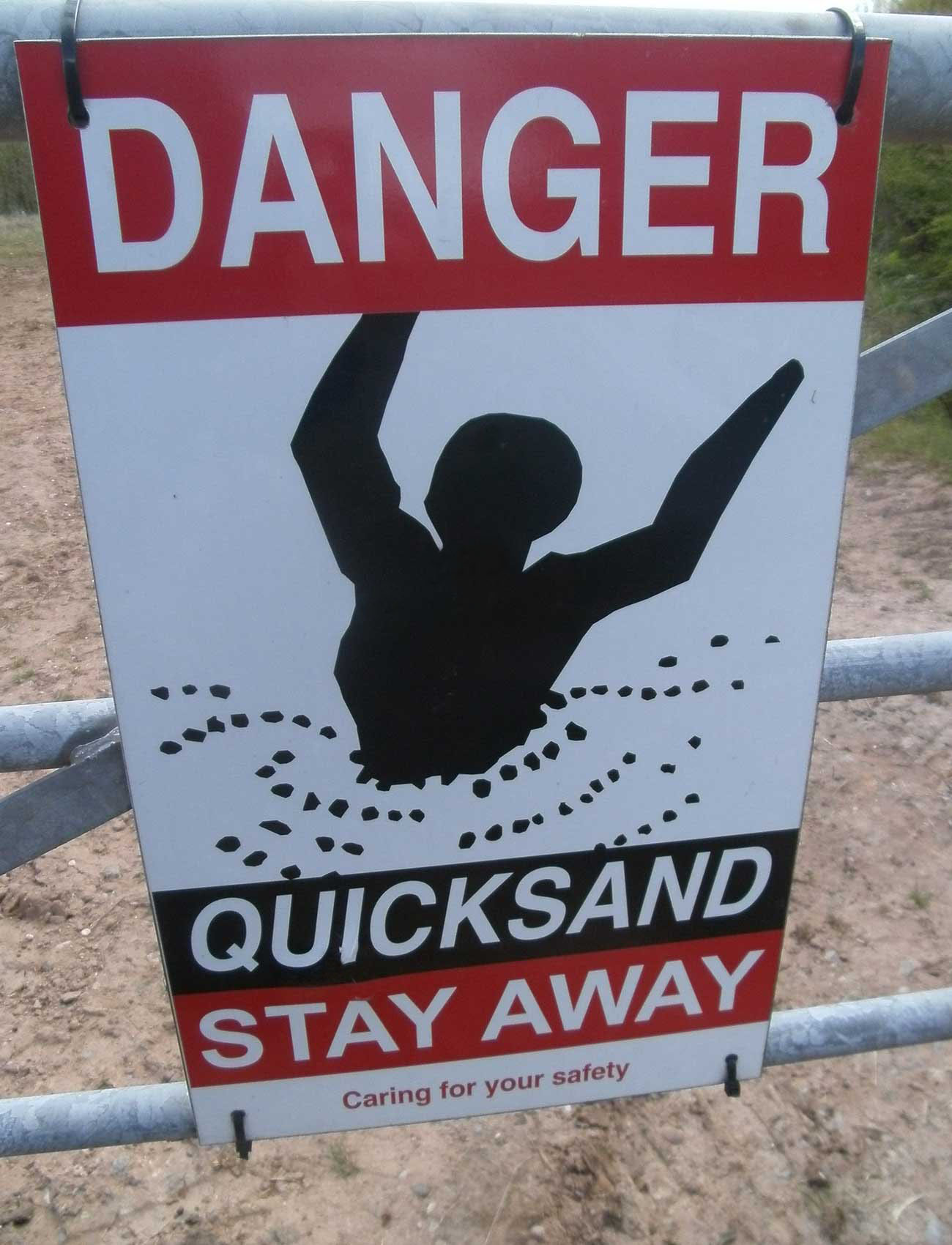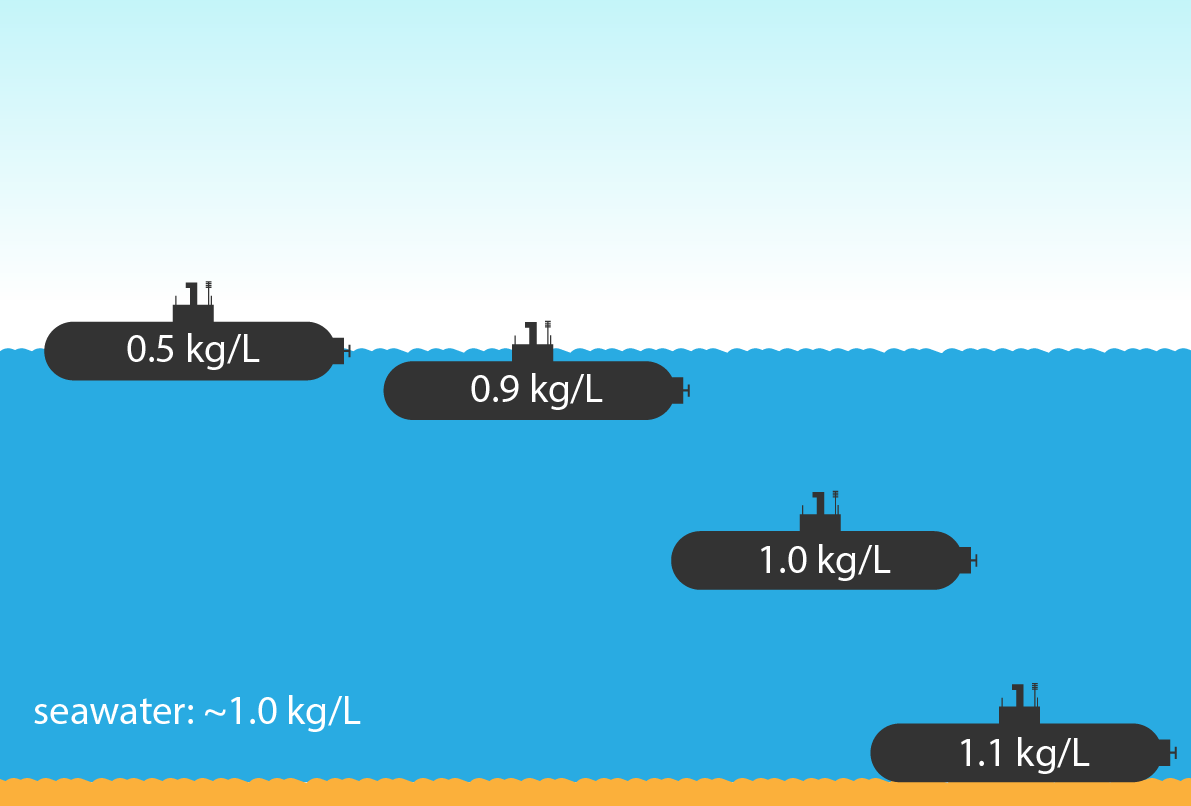Can you really die in quicksand?
It is a Hollywood scene we are familiar with: the hero being chased through the forest and, suddenly, the evil antagonist is sucked into a large pit of quicksand only to be saved at the last minute by the kind-hearted good guy. But does Professor Evil actually need help, or is she not in much danger?
To answer this, we need to understand exactly what quicksand is and a little of the concept of density.

Quicksand—a non-Newtonian fluid
Natural quicksand is a mixture of fine sand, very fine micron-sized particles of clay, and water. It is this special mixture that leads to some interesting properties. If left alone, the quicksand will slowly become more viscous or firmer, but with a sudden change in pressure, it rapidly liquifies.
Liquid mixtures with these properties are known as ‘shear-thinning thixotropic non-Newtonian fluids’ as they don’t seem to follow the normal liquid/solid rules. There are plenty of household examples of thixotropic fluids—including toothpaste, syrups and hair gels—that appear solid but flow like a fluid with an increase of pressure or force (such as squeezing toothpaste out of a tube).
The level of stress or force needed to make the material flow like a fluid is known as the ‘yield stress’. For quicksand, the yield stress is quite low—just a 1 per cent increase in the weight on top of the quicksand is enough.
It can go the other way as well. Shear-thickening non-Newtonian fluids, such as cornstarch in water (oobleck), have practical applications as materials for impact protection such as bullet-proof vests and motorbike armour, rapidly stiffening on impact, but otherwise being comfortable and flexible to wear.
So, as quicksand is a shear-thinning non-Newtonian fluid, as soon as Professor Evil stepped out onto the pit she would very quickly start to sink. But just how far she sinks depends on density.
Density
Density is defined as an object’s mass divided by its volume. The density of water is 1 kg/L—1 kilogram of water takes up 1 litre of space. Density is different to weight—something that is twice as heavy can have the same density if it also has twice the volume.
How much a liquid (the quicksand) tries to push something up to float (like Professor Evil) is based entirely on the comparative densities of the liquid and the object.
If the object’s density (mass ÷ volume) is greater than liquid, it will sink. If its density is less, it will float. And, if you want something to suspend in the middle of the liquid (like a submarine), the densities need to match exactly.
A submarine changes its density by moving water in or out of its ballast tanks. By changing the total combined mass of the submarine this way (without changing the size), the density can be fine-tuned to match that of the water around it.

Back to the quicksand—our bodies have the approximate density of water (tissue is about 0.9 kg/L and bone is about 1.1 kg/L), whereas quicksand is a fair bit denser at about 2 kg/L. This means that while Professor Evil will sink, she will only ever go half-way in (as seen in the first floating sub). As long as she doesn’t try to do a handstand in the quicksand, she won’t drown from being sucked under the surface.
And to get out? Pulling her from above probably won’t work, but if she waggled her legs about (increasing stress on the quicksand to make it less viscous), she would be able to free her legs by lying back and gently swimming backstroke out of the pit.
The end result?
So, it is settled. While it is certain that there are people creative enough to find other ways to endanger themselves in a large pool of water, clay and sand, the laws of physics will prevent you from ever completely sinking in.
That said, there are lots of other ways you can be injured while trying to escape a pit, so it’s best not to tempt fate.
If you intend to visit a quicksand area, take a companion to assist if one of you gets stuck. And remember, stay calm and apply the science to survive.





